Grounding_vs_Bonding_Grounding_Series_(Part_3).pdf
Transcript:
[0m:4s] Hi I'm Josh Bloom, welcome to another video in the RSP Supply education series. If you find that these videos are helpful to you, it certainly helps us out if you could give us a big thumbs up and subscribe to our channel.
[0m:15s] In today's video, we are going to continue on in our series where we are discussing grounding and the many details related to that topic. In our last video, we talked about the purpose of grounding and addressed why grounding systems are so important in the various equipment and electrical circuits we interact with every day.
[0m:38s] If you have not already seen that video, we will link it in the description below.
[0m:43s] For the purpose of today's video, we want to briefly discuss the differences between bonding and grounding.
[0m:52s] These two terms are very commonly confused or misunderstood when referencing grounding systems. Also, each term is referring to something specifically in a grounding system, and it is important to understand the difference, so that when we are installing or trying to understand how a particular system works, we don't misinterpret what is being communicated, and install the system incorrectly, or make assumptions that can potentially lead to a dangerous situation.
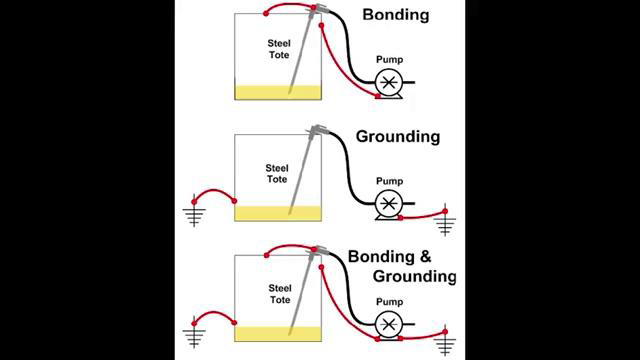
[1m:25s] To better understand the differences between these two terms let's look at each concept in detail which should remove any confusion.
[1m:35s] First, let's talk about bonding.
[1m:39s] Bonding is simply the act of joining two or more electrical conductors together.
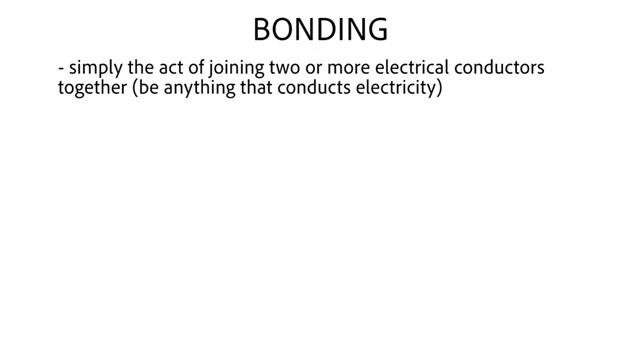
[1m:45s] This does not have to be two wires. It can be anything that conducts electricity. For instance, it can be a wire and a pipe being connected together, or a wire or a piece of metal framework, or a housing for a motor to another electrical housing.
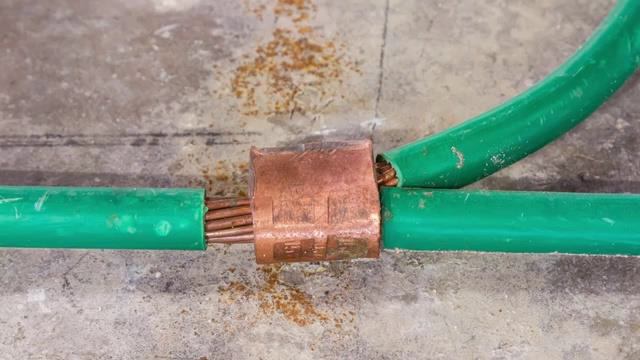
[2m:2s] Again, it is simply the act of joining two electrical conductors together.
[2m:8s] One very important note: in order to properly bond something like a motor, for instance, the bonding must occur to the areas of the equipment that are not intended to carry current during normal operation.
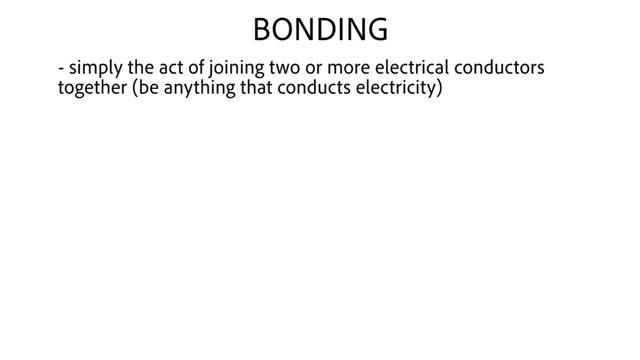
[2m:23s] The reason we bond different pieces of an electrical system together is so that each of these components is at the same electrical potential, meaning neither of these components would see any electrical buildup while the other component does not which could create a shock hazard. By bonding two different components, we eliminate the chance of any current passing between the two different components. So, the primary reason you should be bonding different pieces of equipment together is for safety. So, if an individual happens to touch two different components at the same time, they will not feel the effects of the equalization occurring between the difference in electrical potential. Bonding itself does not protect anything. However, if one of those pieces of equipment is earthed or grounded depending on the terminology that is being used, there can be no electrical energy buildup.
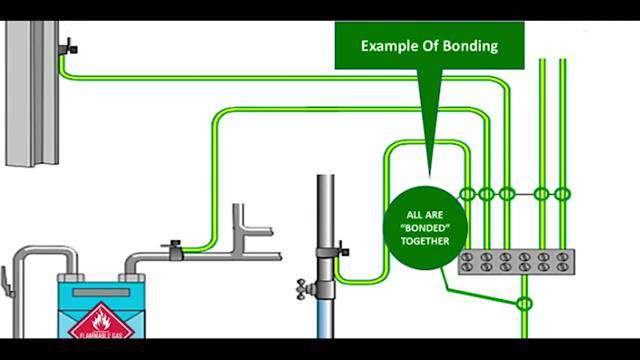
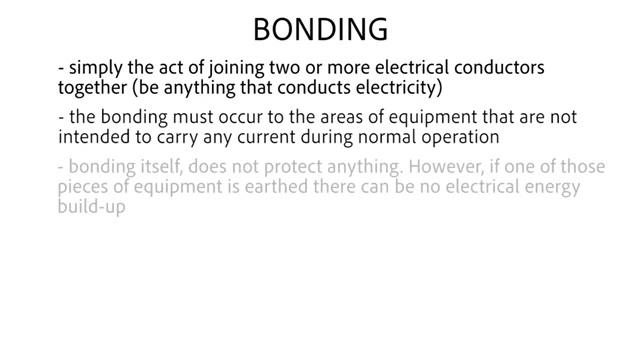
[3m:21s] If the grounded equipment is bonded to another box or piece of equipment, the other piece of equipment is also at a zero electrical potential.
[3m:32s] Now let's talk about grounding.
[3m:35s] When talking about grounding, this normally means that you are connecting the live part, meaning the part which carries current under normal conditions, to the earth.
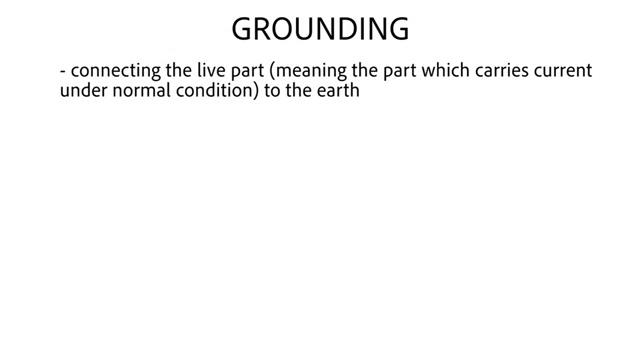
[3m:44s] A good example of this would be the neutral path for any electrical equipment, which is normally connected to the ground at some point in the electrical system. This is normally done for the protection of power system equipment and to provide an effective return path
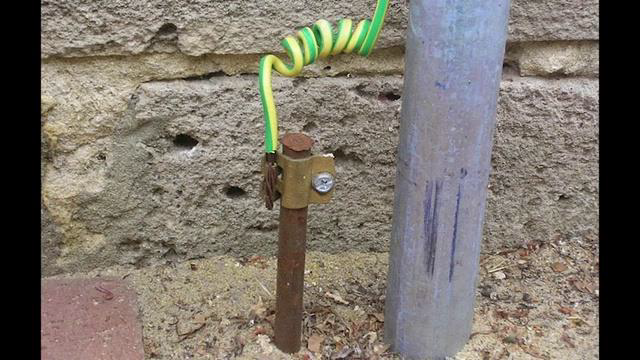
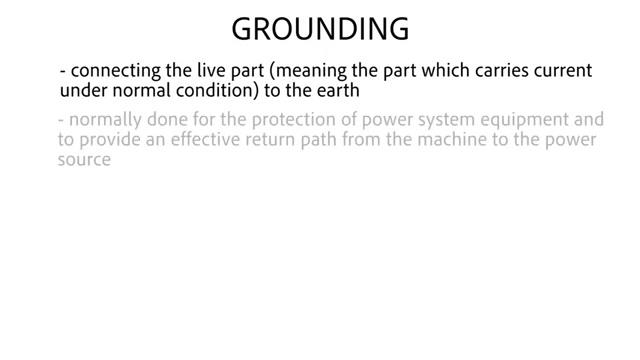
[4m:3s] from the machine to the power source. With the potential of lightning, line surges, or unintentional contact with other high voltage lines, it is possible for very high voltages to develop in electrical system wires.
[4m:18s] Proper grounding can provide a safe alternate path, therefore minimizing damage from such occurrences.
[4m:27s] It is not uncommon to hear the term Earthing, as opposed to grounding.
[4m:32s] Both terms are very similar, and in many cases are the same thing. Earthing often refers to grounding components that are not intended to carry any current during normal operation, whereas grounding refers to the current carrying part of a system such as a neutral wire. In many cases, only one term is used to describe both functions since they are so similar. In Europe and other places around the world, Earthing is the more common term, and in the U.S. grounding is more commonly used.
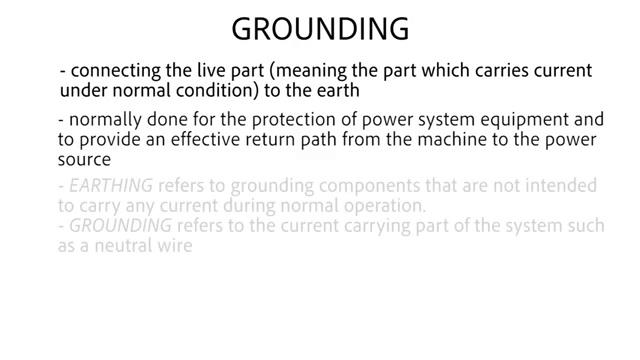
[5m:7s] By understanding the differences between bonding and grounding, you should be able to better understand how a grounding system should function, which can help you achieve a safe and more efficient electrical system.
[5m:23s] For a full line of electrical grounding equipment and thousands of other products, please go to our website. For more information or other educational videos, go to RSPSupply.com, the Internet's top source for industrial hardware. Also, don't forget: like and subscribe.




